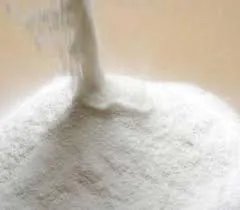Cellulose for Industrial Applications A Versatile Biopolymer
Cellulose, the most abundant organic polymer on Earth, has long been recognized for its significant role in nature as a structural component of the cell walls in plants. However, its applications extend far beyond the natural ecosystem, reaching into various industries where it serves as a valuable resource. With a growing emphasis on sustainability, cellulose has emerged as a critical biopolymer for numerous industrial processes, playing a key role in transforming raw materials into innovative products.
The Structure and Properties of Cellulose
Cellulose is a linear chain polysaccharide composed of β-D-glucose units linked by β(1→4) glycosidic bonds. This unique structure confers a remarkable degree of strength and rigidity, making cellulose a vital component of plant fibers. Its properties, including biocompatibility, biodegradability, and non-toxicity, contribute to its appeal in industrial applications. Additionally, cellulose can be derived from various sources, including wood, cotton, and agricultural byproducts, aligning with the principles of a circular economy.
Industrial Applications of Cellulose
The utility of cellulose in industrial contexts is vast. One of the most significant applications is in the production of paper and packaging materials. The pulp and paper industry relies heavily on cellulose fibers for producing various paper products, from writing paper to cardboard packaging solutions. With rising concerns about plastic waste, cellulose-based packaging materials are gaining traction as eco-friendly alternatives.
Beyond packaging, cellulose is widely used in the textile industry. Regenerated cellulose fibers, such as rayon and lyocell, serve as sustainable alternatives to conventional synthetic fibers like polyester. These fibers are not only biodegradable but also provide excellent breathability and moisture-wicking properties, making them suitable for clothing and home textiles.
'cellulose for industrial'

Cellulose also plays a crucial role in the food industry. As a food additive, it is used as a thickening agent, stabilizer, and emulsifier. Microcrystalline cellulose, in particular, is valued for its ability to improve the texture of processed foods while providing a source of dietary fiber. Its functional properties enhance food products, making them more appealing to consumers seeking healthier options.
In the realm of pharmaceuticals, cellulose is utilized as an excipient in drug formulations, aiding in the delivery of active ingredients. The inert nature of cellulose ensures that it does not interfere with the therapeutic properties of medications, making it an ideal choice in the pharmaceutical industry. Additionally, cellulose nanocrystals and nanofibers are emerging as promising materials for drug delivery systems, enhancing the efficiency of pharmaceutical products.
Innovations in Cellulose Technology
Recent advancements in cellulose technology have unlocked additional opportunities for industrial applications. The development of nanocellulose, derived from cellulose fibers through physical or chemical processes, has garnered significant attention. This nanomaterial exhibits exceptional mechanical strength and transparency, making it suitable for various applications, including electronics, composites, and even biomedical applications.
Moreover, cellulose is being explored as a sustainable alternative in the field of biofuels. By converting cellulose-rich biomass into fermentable sugars, it can serve as a renewable feedstock for the production of bioethanol and other biofuels. This shift towards cellulose-based biofuels not only reduces dependence on fossil fuels but also minimizes greenhouse gas emissions.
Conclusion
The industrial applications of cellulose are as diverse as they are impactful. As industries strive for sustainable solutions, the utilization of cellulose as a biopolymer offers numerous benefits across sectors, from packaging to textiles, food, pharmaceuticals, and beyond. With ongoing research and innovation, cellulose continues to inspire advancements that align with environmental concerns and the demand for sustainable materials. Its versatility and abundance position cellulose not just as a natural resource but as a cornerstone of a sustainable industrial future. As we continue to harness the power of cellulose, we move closer to a greener, more sustainable world, demonstrating the potential of this remarkable biopolymer in driving crucial changes across industries.
-
The Application and Significance of Construction RdpNewsMay.19,2025
-
Industrial Grade HpmcNewsMay.19,2025
-
Building Coating Adhesive Building Coating Adhesive HpmcNewsMay.19,2025
-
Application Of Hpmc For Detergent For Detergent In DetergentsNewsMay.19,2025
-
Application Of Hpmc Cellulose In Cement-Based MaterialsNewsMay.19,2025
-
Application Of High Quality Hpmc For Construction In The Field Of ConstructionNewsMay.19,2025




